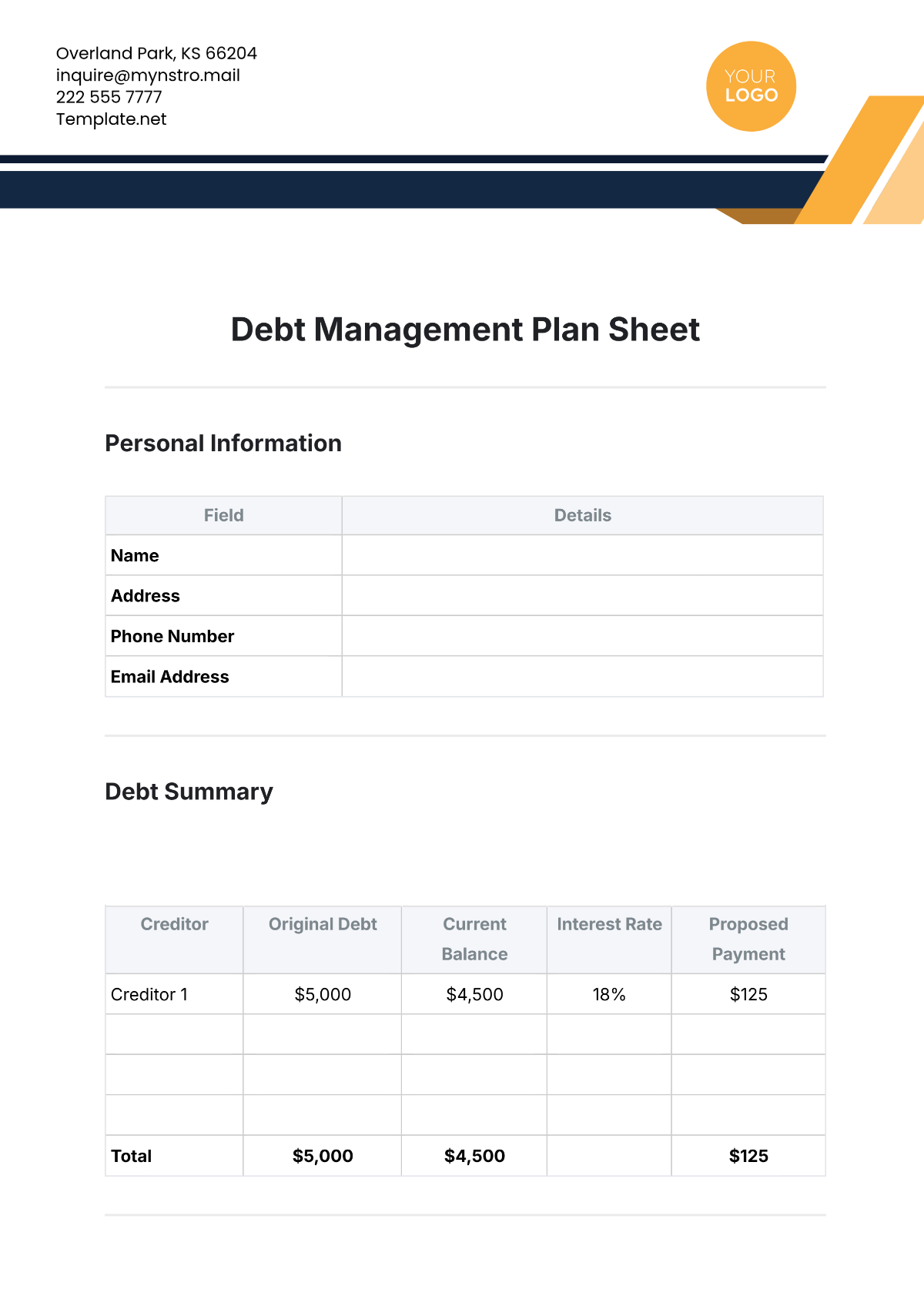Preliminary Trading Plan
I. Introduction
This Preliminary Trading Plan by [YOUR COMPANY NAME] serves as a comprehensive guide for effectively trading cryptocurrencies in today's dynamic market. Cryptocurrency trading requires careful planning and analysis to navigate the inherent volatility and risks associated with digital assets.
II. Trader Profile
As a seasoned cryptocurrency trader, [YOUR COMPANY NAME] has extensive experience in navigating the cryptocurrency market. Our risk tolerance is moderate, and our primary trading goal is to achieve consistent returns while minimizing losses.
III. Market Analysis
A. Cryptocurrency Market Overview
This table provides an overview of key cryptocurrencies and their market capitalization:
Cryptocurrency | Market Cap (USD) | 24h Volume (USD) | Dominance (%) |
|---|---|---|---|
Bitcoin (BTC) | $1,000,000,000 | $500,000,000 | 50% |
Ethereum (ETH) | $500,000,000 | $200,000,000 | 25% |
Ripple (XRP) | $200,000,000 | $100,000,000 | 10% |
B. Market Trends
Analyzing recent market trends helps identify potential trading opportunities and risks. Likewise, the cryptocurrency market is experiencing increased volatility, with Bitcoin and Ethereum showing strong bullish momentum. Altcoins are also gaining traction, particularly in decentralized finance (DeFi) projects. Regulatory developments and macroeconomic factors continue to impact market sentiment.
IV. Trading Strategies
A. Technical Analysis
Utilize technical indicators such as moving averages and RSI to identify entry and exit points. For example, use a 50-day moving average to confirm trend direction and RSI to detect overbought or oversold conditions.
B. Fundamental Analysis
Evaluate cryptocurrency projects based on factors like team expertise, technology, and adoption. For instance, analyze the whitepaper, developer activity, and partnerships.
Strategy | Tools Used | Purpose |
|---|---|---|
Technical Analysis | Moving Averages, RSI | Identify entry and exit points |
Fundamental Analysis | Whitepaper, Developer Activity | Evaluate project potential and viability |
V. Risk Management
Position Sizing: Allocate no more than 5% of total capital to any single trade to manage risk effectively.
Stop-Loss Orders: Implement stop-loss orders at 10% below the entry price to limit potential losses.
VI. Trade Execution
A. Criteria for Selecting Cryptocurrencies
Choose cryptocurrencies with high liquidity, strong community support, and solid technical fundamentals. For example, prefer the top 10 cryptocurrencies by market cap with active development teams.
B. Timing Trades
Use a combination of moving averages and market sentiment analysis to time entries and exits.
VII. Performance Monitoring
A. Trade Journal
Maintain a detailed trade journal to record each trade's entry and exit points, profits, and losses.
B. Performance Metrics
Monitor key metrics such as win rate, average return per trade, and maximum drawdown to evaluate performance.
Performance Metric | Importance |
|---|---|
Win Rate | Percentage of profitable trades |
Average Return per Trade | Measure of profitability |
Maximum Drawdown | Maximum observed loss from peak to trough |
VIII. Security Measures
Secure Wallets: Use hardware wallets and secure exchanges to store cryptocurrencies safely.
Two-Factor Authentication (2FA): Enable 2FA on all trading accounts to enhance security.
IX. Compliance
Tax Considerations: Stay informed about tax regulations related to cryptocurrency trading and ensure compliance.
Regulatory Compliance: Adhere to relevant regulations and guidelines governing cryptocurrency trading.
X. Conclusion
In conclusion, this preliminary trading plan provides a structured framework for successful cryptocurrency trading. By following the strategies outlined herein and maintaining discipline, [YOUR COMPANY NAME] aims to achieve our trading goals while mitigating risks effectively.
[YOUR COMPANY NAME]
[YOUR COMPANY ADDRESS]
[YOUR COMPANY WEBSITE]
[YOUR COMPANY SOCIAL MEDIA]

















































